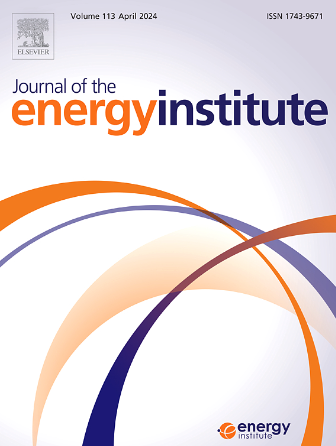Sorption enhanced steam reforming of methanol for high-purity hydrogen production via Fe-doped Cu-MgO catalytic-sorption bifunctional material
IF 5.6
2区 工程技术
Q2 ENERGY & FUELS
引用次数: 0
Abstract
One of the key routes toward green hydrogen storage and utilization is hydrogen production through green methanol reforming. In this study, Fe-doped Cu-MgO catalytic-CO2 sorption bifunctional material was synthesized using the sol-gel method. The physicochemical properties of these materials were characterized using XRD, XPS, and CO2-TPD. Then the hydrogen production performance of sorption enhanced steam reforming of methanol (SE-SRM) was evaluated in a fixed-bed reaction system. The results revealed that the material's primary components were Cu, MgO, and Fe2O3. The addition of Fe component was beneficial for promoting Cu dispersion. The variation of the Fe doping amount influenced the interaction between Cu and MgO, altering the distribution of Cu ions, surface oxygen states, and CO2 sorption active site occupancy. Moderate Fe doping significantly improved methanol conversion and H2 selectivity. After 15 min of reaction time, Fe-doped materials exhibited significantly higher methanol conversion than standard Cu-MgO material. The influences of reforming temperature, water-to-methanol molar ratio, and aqueous methanol flow rate on the performance of Fe-doped Cu-MgO materials were also investigated. At reaction conditions of 200 °C, water-to-methanol ratio 1.50 and methanol flow rate of 0.10 mL/min, methanol conversion reached 77.5 % and hydrogen selectivity 83.1 %, which were superior to previous methanol reforming performance with Cu-based catalysts. Results from present study suggest that the bifunctional materials had strong potential for green methanol reforming application in hydrogen production.
求助全文
约1分钟内获得全文
求助全文
来源期刊

Journal of The Energy Institute
工程技术-能源与燃料
CiteScore
10.60
自引率
5.30%
发文量
166
审稿时长
16 days
期刊介绍:
The Journal of the Energy Institute provides peer reviewed coverage of original high quality research on energy, engineering and technology.The coverage is broad and the main areas of interest include:
Combustion engineering and associated technologies; process heating; power generation; engines and propulsion; emissions and environmental pollution control; clean coal technologies; carbon abatement technologies
Emissions and environmental pollution control; safety and hazards;
Clean coal technologies; carbon abatement technologies, including carbon capture and storage, CCS;
Petroleum engineering and fuel quality, including storage and transport
Alternative energy sources; biomass utilisation and biomass conversion technologies; energy from waste, incineration and recycling
Energy conversion, energy recovery and energy efficiency; space heating, fuel cells, heat pumps and cooling systems
Energy storage
The journal''s coverage reflects changes in energy technology that result from the transition to more efficient energy production and end use together with reduced carbon emission.
 求助内容:
求助内容: 应助结果提醒方式:
应助结果提醒方式:


